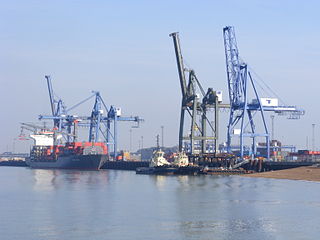 Following a strong headhaul cargo growth in the east-west trades in August, Drewry has noted a drastic drop in volumes by September, and forecasts a corresponding impact on short-term spot rates as well as in contract rates for next year.
Following a strong headhaul cargo growth in the east-west trades in August, Drewry has noted a drastic drop in volumes by September, and forecasts a corresponding impact on short-term spot rates as well as in contract rates for next year.
Drewry said volumes in August amounted to 933,000 TEUs to boast a resounding growth rate of 9.1 percent year-on-year. But the 12-month rolling average for August of 7.8 percent only mirrored more or less that of the previous two months, pointing to the likelihood that the strength of demand will abate in the fourth quarter, said the maritime research service in its latest report.
In the first eight months of this year, Asian exports to North Europe have grown, except those destined for Russia. Shipments to Germany grew by 10.4 percent, with the UK and the Netherlands registering similar increases of 10.5 percent and 10 percent, respectively. Belgium has imported 7.2 percent more and France 6.8 percent.
But the growth comes as the IMF forecasts the continuing weak economic expansion of most of the European community.
Said Drewry: “In its quarterly update of the World Economic Outlook released on October 7, the IMF was still trimming its 2014 growth forecasts: Germany was cut back by half a percent to 1.4 percent and France was reduced to just 0.4 percent. Only the UK escaped any adjustment with GDP predicted to grow by a comparatively buoyant 3.2 percent.”
As for capacity, the supply of slots during the third quarter has remained more or less constant at around 900,000 TEUs per month, but it is gradually trickling up as more of the new breed of ultra-large container vessels arrive in the trade. The 12th ship in Maersk’s Triple-E newbuilding program—Mogens Maersk—was delivered in September and completes the new fleet deployment of the Danish carrier’s AE10 service.
In October, however, there has been “quite a drastic culling of slot supply,” it noted. Spread across all the carriers, 11 blanked weekly voyages have been identified for the month, resulting in some 100,000 TEUs being taken out of the system—or some 11 percent of a normal month’s supply.
Ten of those voided sailings took place in the first fortnight of October, coinciding with the Golden Week holiday in China. A further 8,500 TEUs were stripped away in the first week of October when Evergreen decided to defer the maiden voyage of the 13,808-TEU Thalassa Axia on its CEM service (covering both the North Europe and Mediterranean trades) until four weeks later. The ship was replaced by the 5,364-TEU Ever Ulysses, which was switched from the intra-Asia trade.
“The scale of this cull in such a concentrated period is quite unprecedented,” said Drewry.
It said the removal of so much tonnage is not simply a seasonal adjustment but also a swift response by the carriers to the “savage fall” in spot rates during September. It pointed to reports in the second half of August that vessel utilization was dropping—enough to cause spot rates to fall from $2,877 per 40 foot on August 7 to $2,360 by the end of the month.
“The barometer was changing enough too to sweep aside any attempts by the carriers to impose a September 1 GRI.”
By September, Drewry said that “volumes softened and spot rates went into freefall.” And by the middle of the month, rates of $1,500 were being touted in the market and, come the end of September, quotations of $1,300 were freely available, with some lines offering appreciably lower.
“In the space of just seven weeks the headhaul spot rates had collapsed by more than 50 percent,” said Drewry, adding that the sharp downward trend was clear to see.
By November, Drewry sees carriers attempting to implement large general rate increases (GRIs) at the start of the month, ranging between $900 and $1,000 per TEU in an attempt to drive the spot market rates back up. It predicts, however, that with “the rapidly deteriorating situation,” re-negotiations for 2015 contract rates will likely not be in their favor.
“The 1 November GRI will be a re-run of what happened a year ago. The carriers will attempt to drive the spot market back above $2,000 per 40ft but there is little chance of the 2015 BCO rates being any higher than this year.”
Photo: Glen Denny




